Creating Collaborations: Collaborating with Other Museums & Community Partners
![]()
Museum
![]()
Topics
Big Ideas
How an Affiliate’s focus on collaboration brought rich programming to its community
Identifying community and museum collaborators across disciplines
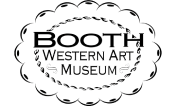
Affiliate Spotlight: Booth Western Art Museum
Working with local museums in other disciplines
In 2016, there was little to no collaboration occurring at Booth Western Art Museum. Patty Dees, Director of Education, with the support of her executive director, sought to leverage her previous experience with collaborations to change this. Today, Booth Western Art Museum is a hub of collaborations with local museums and community partners in Cartersville, Georgia.

With Bartow History Museum
Booth Western Art Museum collaborates with Bartow History Museum on Family Days and Family Nights, with a focus on science, technology, engineering, art, and math (STEAM). This programming spans homeschool days, family programming, and special exhibitions.
A standout example is a recent Family Day focusing on Black pioneers. The opening exhibit featured the contributions of 50 African Americans often left out of history books, told through quilts by contemporary artists
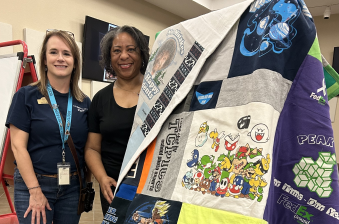
With Summer Hill
Booth Western Art Museum has done several collaborations with Summer Hill, an African American History museum and former school.
These collaborations involved bringing in an African American quilter for the day and creating other hands-on activities.
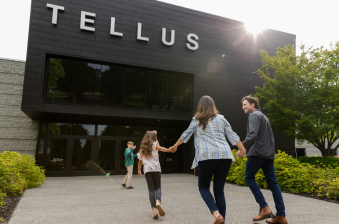
With Tellus Science Museum
A major event of the year for Booth Western Art Museum is West Fest, an event for school groups that brings in nearly 3,000 students over two days. Joined by Tellus Science Museum, another Smithsonian Affiliate in Cartersville, they provide presentations and hands-on activities.
On various weekends, Booth Western Art Museum participates in events at the science museum, “providing an art component to their science component.” “With the science museum,” says Dees, “we collaborate also on professional learning for teachers.”
It’s encouraging to me when I see other museum educators reaching out to other types of museums and not just focusing on the discipline that their world revolves around. There are so many ideas that can be shared outside of just your discipline.

Booth Wester Art Museum
AFFILIATE ADVICE
How to make time for collaborations
01
Collaborations start with investing time into relationship-building.
According to Dees, collaborations become natural after investing time in relationship-building. “This is something that I really try and mentor our young museum educators coming into my department—how critical it is to build your communication skills and your networking in the community,” says Dees. “Once you reach out and establish those networks, then it becomes as easy as ‘We’re doing this program, would you like to be part of it? We’d love to do that. What can we do together?’ It becomes natural, but you do have to invest time into creating relationships.”
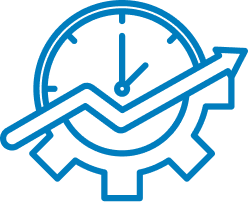
02
Write relationship-building into strategic planning.
What unlocks time for relationship-building? According to Dees, it all starts with building collaboration with other museums into your organization’s strategic planning, which then carries down into departmental goals. “While you’re working on strategic planning, making sure that your voice is heard in that planning—build that into your objectives, goals, and action steps, that gives you that accountability,” says Dees. “And then those are carried down into the department to your departmental goals.”
While your organization’s strategic planning may not have stated goals of collaborating with other museums, its associated action steps can explicitly call out collaboration and relationship-building. Dees provided the example of one explicit goal from strategic planning of reaching specific audiences, including Latino audiences. Under this umbrella goal, community outreach and relationship-building with community partners to unlock compelling programming to reach these audiences become fully aligned with strategic goals.
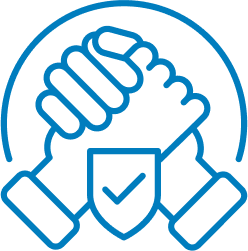
03
Be explicit in departmental goals about collaborations.
Dees advises using departmental goals, which support strategic objectives and the museum’s mission, as an opportunity to call out collaborations explicitly. For example, Dees says, “Let’s reach out to the Department of Education or the Boys and Girls Club; be specific and targeted. Specifically, in our education goals, we are talking about collaborations with other organizations and museums. We are being more specific in the collaborations that we want to see in the community in delivering family or school-based programs or adult programs. Yearly, we assess those departmental goals in a meeting.”
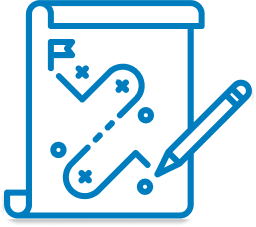
AFFILIATE SPOTLIGHT
BOOTH WESTERN ART MUSEUM
Working with community partners towards a shared mission
Booth Western Art Museum is also focused on ongoing work with community partners to better reach and serve specific audiences, including Latino audiences. Today, the museum has an extensive network of relationships built through community outreach and collaborations.
“We wanted to make sure that our Latino community understood that they are welcome here and that our programming is open to all; it’s accessible; it’s inclusive,” says Dees. “But we really needed to reach out first through outreach efforts.”
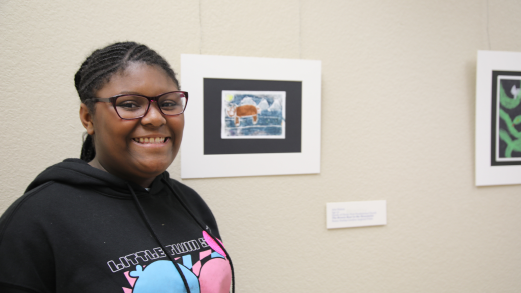
With Boys and Girls Club
Booth Western Art Museum is also focused on ongoing work with community partners to better reach and serve specific audiences, including Latino audiences. Today, the museum has an extensive network of relationships built through community outreach and collaborations.
“We wanted to make sure that our Latino community understood that they are welcome here and that our programming is open to all; it’s accessible; it’s inclusive,” says Dees. “But we really needed to reach out first through outreach efforts.”

With English to Speakers of Other Languages (ESOL)
Working with English for Speakers of Other Languages (ESOL) programs has been an essential component of efforts to serve Latino audiences better. “In working with the school districts and leadership, ESOL has been critical for us because ESOL has deep-rooted ties with families,” says Dees.
“This has allowed us, in partnership with the school districts, the ability to have focus groups with the parents and families, bringing them to the museum, and maybe making them feel welcome for the first time.”
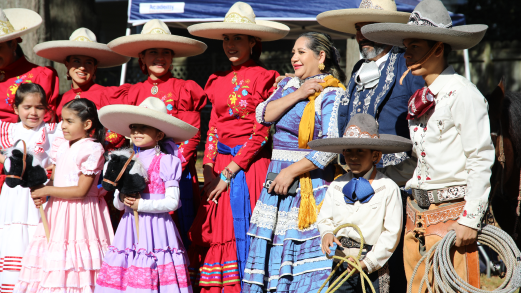
West Fest: Working with Latinx Community Leaders
Collaborating with cultural organizations has been a major part of Booth Western Art Museum’s efforts. West Fest is a large festival celebrating the many cultures that contributed to the American West. Last year, Booth Western Art Museum worked with Charrería groups to highlight charro and escaramuza, the cowboy and rodeo traditions throughout Mexico.
“We were able to bring a large community of our Latino population here for that festival,” says Dees. “Those cultural ties, reaching out to cultural groups through Latino and Latina leaders in the community, really helped us build our audiences and understand what our collection is about and how it applies to Latino culture.”
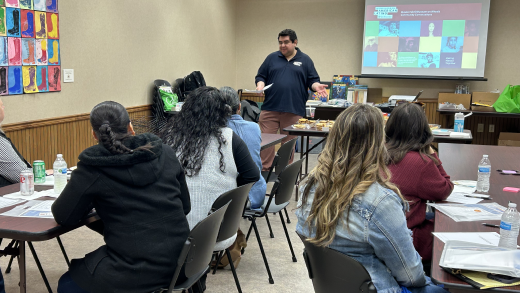
With Community Members as Focus Groups
Dees cites an example of quickly pulling together community-informed work based on a solid community partnership network. The Smithsonian’s National Museum of the American Latino (NMAL) staff conducted a listening tour throughout various cities to understand how best to serve Latino audiences through a mobile project NMAL is developing. Smithsonian Affiliations’ National Outreach Manager, Alma Douglas, asked for Booth Western Art Museum’s help in hosting and facilitating focus groups of teachers and museum educators working with Latino audiences, parents, and community leaders.
“We worked collaboratively with our sister museums and school districts to reach out to the community and establish five focus groups. We hosted several here, one at the Tellus Science Museum, one at our local technical college at an English language class for parents, through our ESOL contacts,” says Dees. “We were able to pull from so many of our community connections: leaders of the Latin American Association, the Charrería group, which I had worked with previously and are major leaders in the Latino community, other local Latino groups and cultural organizations in Cartersville, and host very successful sessions with deep conversation,” says Dees. “Latinos are not a monolithic group. We had large representation of different cultures and countries.”
You’re facing that stigma of an art museum being an ivory tower. I love coming in and working grassroots with the community and building those community networks, to let them know, this is a place for you.

Booth Western Art Museum
AFFILIATE ADVICE
Bringing in community & museum collaborators
01
To start finding the right community collaborators, start with school systems
Dees advises other museum educators to start reaching out to school systems, which are invaluable for creating networks and finding the right individual or institution to collaborate with. “To start to build that network, you really should look to the school systems,” says Dees. “If the person you contact is not the right person, they’ll send you to the person you should be speaking with.”

02
Host potential community partners at your museum
“It’s reaching out to school districts and community centers, hosting them on-site for a tour,” says Dees. “Ask them to come and that you want to show them around. Let us show you this resource; let us show you how it might fit into what you’re doing.”

03
Lean on your professional networks for leads and feedback
“It’s critical to lean on your professional networks and other museum professionals in your field, whether it’s the state, regional, or national level,” says Dees. “You can access listservs, and it’s a way to communicate with your colleagues in a safe environment where you can have these open discussions. You’re going to find both colleagues who have been in the field for 40 years as well as those with new ideas coming in, and you can gain so much discussion from these groups. Any questions you have, you can throw out, and you’ll get multiple responses from different people in different types of museums. We also attend our state conferences for museum educators and museum professionals, and we know everyone really well.”
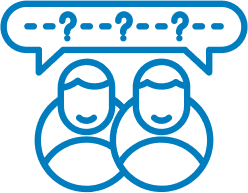
We are a small town, but we are rich in museums. I don’t think it’s impossible by any means to collaborate quite easily with other museums. We’re an art museum—you can reach out to a science museum, a history museum. I think museums can change lives. And I think that all members of the community should feel like they are able to walk through the doors and be part of your museum.

Booth Western Art Museum
Learning Excursions
Take a deeper dive into what it means to be an Affiliate through these Learning Excursions. Use filter controls below to access content by type.

Essentials
Geared towards new and existing Affiliates, access modules to assess your organization’s:
- Community Engagement
- Vision for Engagement
- Collaboration and Relationship Building

Affiliate Stories
Modules to enhance your collaborative efforts, build leadership skills, and showcase your impact. Here you’ll find:
- Case studies
- Affiliate perspectives

Tools for Action
To facilitate ongoing learning and skill development, find:
- Reflection guides
- Toolkits
- Other resources
We’d love to hear from you!
Do you have a powerful story of successful community engagement or collaboration you’d like to share? Or do you want to connect and learn more about community engagement resources and supports?
Reach out to your National Outreach Manager. They’d love to connect and share ideas!


